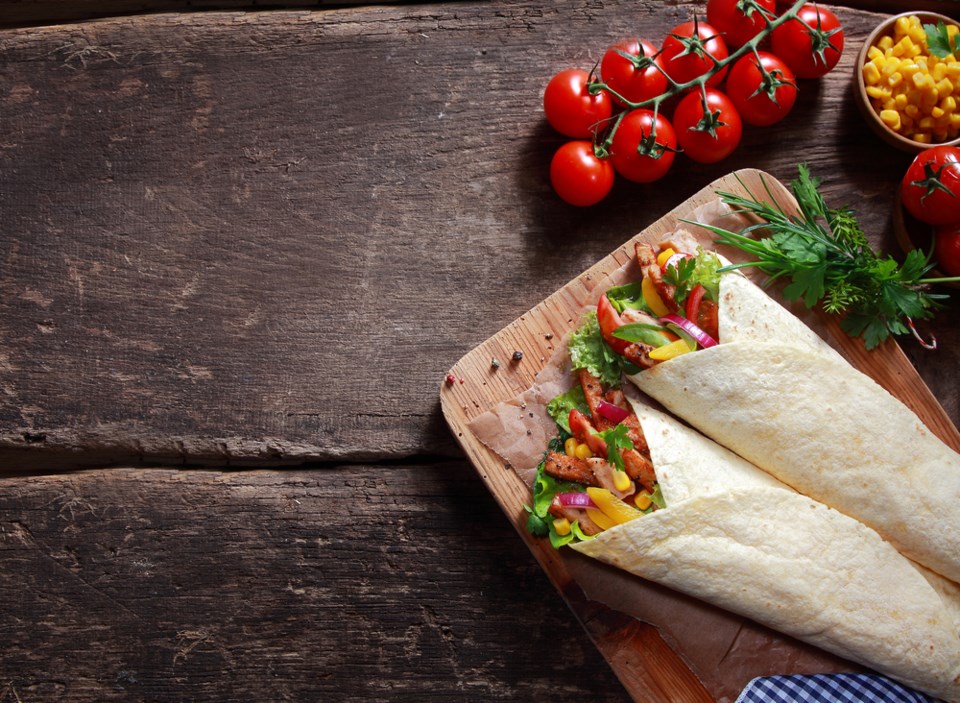Food wraps. A modern culinary invention? Most of us probably think so, since in recent times they have appeared more and more on restaurant menus. In particular, fast food burger joints as a lower calorie alternative to the often high-fat laden options.
Most wraps as we know them in this country are made with a soft flour tortilla encasing a filling mostly of grilled chicken, and fresh tasty condiments like lettuce and tomato. But the truth of the matter is, in many cultures around the world, wrapping food in a flexible, edible vessel like a tortilla or flatbread is a tradition eons old, some as far back as before recorded history.
Take something as simple as Mexican tacos, which we have totally embraced, expanded on, and enjoyed here. In Spanish, taco means “light snack,” and it is believed the taco itself dates back to Aztec Indian times, when freshly made corn tortillas were used, in absence of utensils, to scoop up food to eat. Now called “street tacos,” the fillings vary from region to region in Mexico, with fish or seafood being common in coastal areas and beef or pork in landlocked parts of the country.
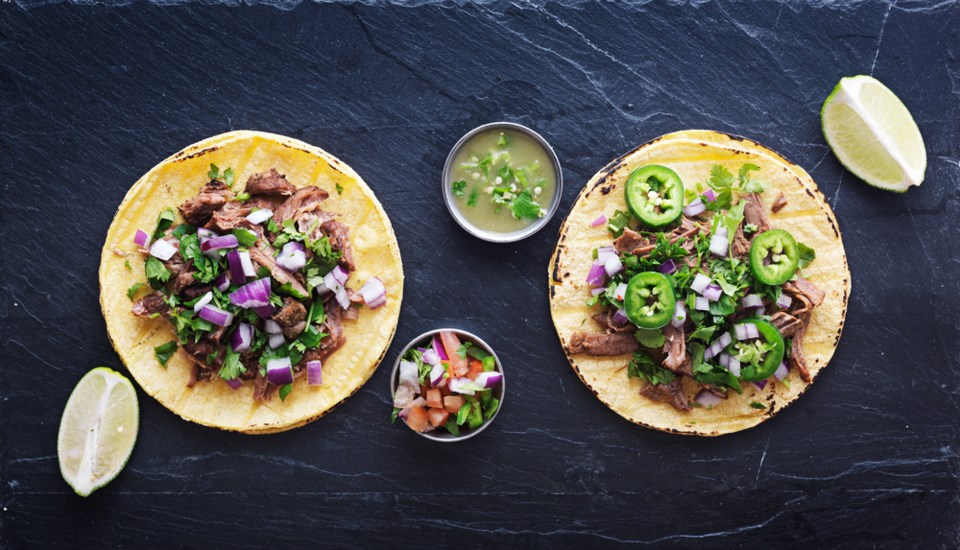
In Mexico, tacos are usually made with soft corn tortillas, not the hard shell u-shaped ones we are used to using in this country. The hard taco shell is more of an American invention to extend the shelf life of corn tortillas. Tortillas are such a staple of Mexican cuisine, they are made and consumed daily. Mexican burritos, another form of wrap, are made with soft flour tortillas.
In northern China, Mandarin pancakes, similar to French crepes, are traditional for making wraps. The pancakes are filled with delicious stir-fries made typically with shredded pork, vegetables, and scrambled eggs. In other parts of China, lettuce or cabbage leaves are used for the same purpose.
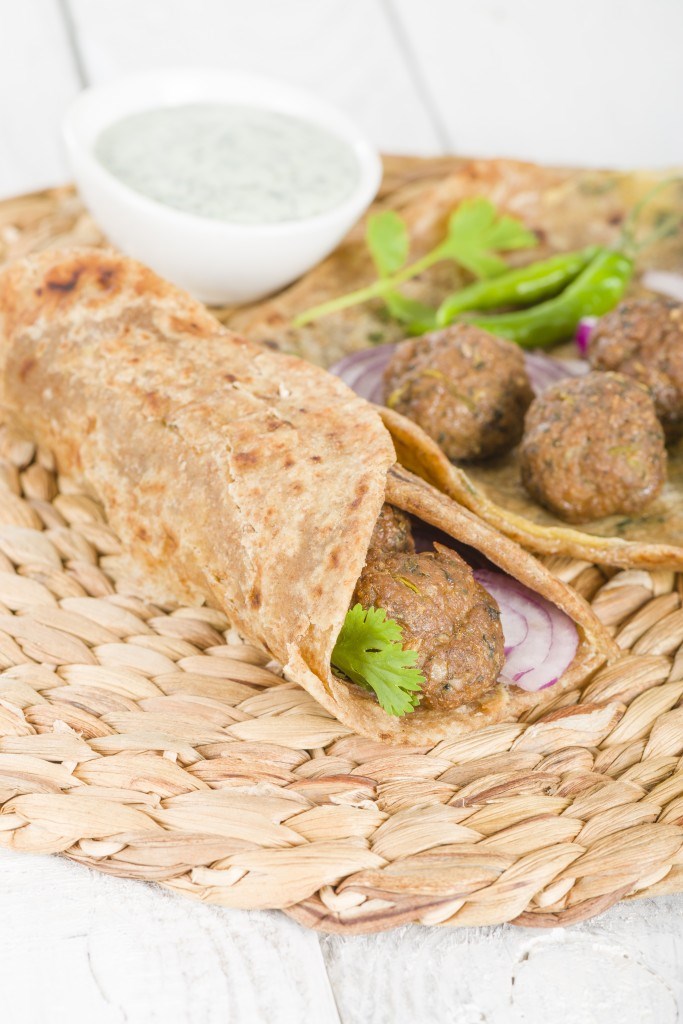
You can find kati rolls in India where street vendors wrap skewer-roasted kebabs in roti, unleavened griddle-cooked bread made with whole wheat flour. Naan is a leavened white flour flatbread baked in a Tandoor oven and is often used in the same way lending a different texture and flavor.
In Ethiopia, injera is made with a sourdough starter and has a spongy texture. It is a necessity for eating stews or even salads. In the Middle East, you may be given a wrap in pita, a round pocket bread that can be stuffed with any number of flavor combinations.
A Brazilian specialty, pastels are thin crispy pastries baked with a variety of fillings, but most commonly just meat and cheese. Empanadas are single serving turnovers stuffed with a savory meat and vegetable mixture, although fruit fillings also make for a delectable dessert wrap. These are an Argentinian specialty, but have been embraced throughout Central and South America.
Being the multi-cultural melting pot that we are in this country, we have been exposed to and have welcomed many forms of wraps into the American diet. And not just as “snacks,” but more often as main course meals.
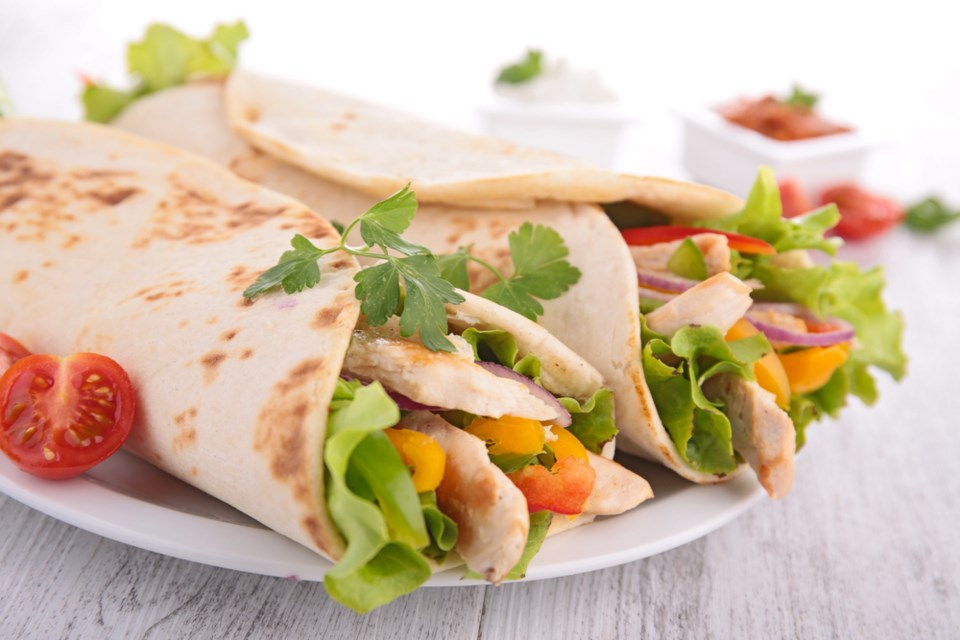
On a recent trip to northern California to visit my longtime friends Ann and Mark Tompkins, Ann (who is a wonderful cook) made Greek-inspired chicken wraps that were fabulous. Hummus is spread on soft flour tortillas which then are topped with a yummy mixture of shredded chicken, fresh oregano, olive, tomato, cucumber, and feta cheese. Ann served them with a side of orzo salad, but you can also serve them with Israeli Couscous Salad with Vegetables, another favorite of mine.
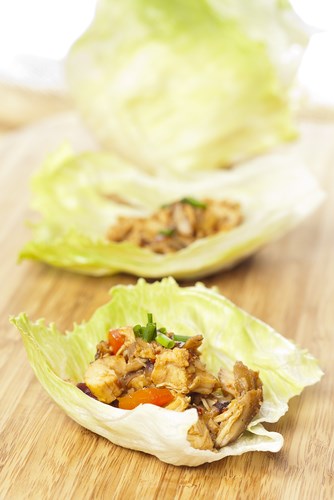
I love lettuce wraps, often found on the menu in Asian restaurants. They are typically listed as an appetizer, but I order them as my meal! I also make them at home, with Mu Shu Chicken Lettuce Wraps being the one I make the most often. I recommend buying Bibb or Boston lettuce to make these; the leaves are soft little bowls of freshness that easily encase the chicken mixture.
Vietnamese Spring Rolls are also meant to be an appetizer, but I serve them as a main course as well. Rice paper wrappers can be purchased at most Asian markets. After dipping them in hot water for a few seconds, they become a great way to encompass a delectable combination of noodles, shrimp, and fresh vegetables and herbs, to serve with a variety of dipping sauces.
These days, breakfast burritos are a popular item at most fast food restaurants, but they are really easy to make at home. Just scramble a few eggs with chiles for a little spiciness and flavor, green onions, cheese, and cilantro, then fold them into a soft flour tortilla to eat. Simple but delish!
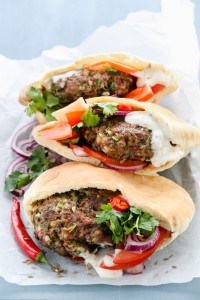
And when I can get over to Sara’s Market and Bakery in Richardson to buy my favorite fresh pita bread (the best anywhere), I enjoy making Turkish Lamb Pita Burgers. There are a lot of ingredients in this dish, but the flavor combination is incredible and well worth the effort.
When it comes to making wraps, as you can see the possibilities are endless. Any fillings you would use to make a sandwich with bread can be easily translated to a wrap. And what a fun way to enjoy a meal! Bon Appetit.

